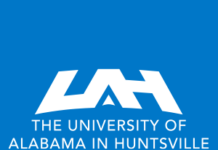 A new study by Aaron N. Taylor, an assistant professor at the Saint Louis University School of Law examines how law schools have dealt with lower student demand since the onset of the Great Recession of 2008. The report finds that many law schools, particularly those that historically have been the least selective, are admitting more minority students than had been the case. The more selective law schools have admitted more White and Asian students than was the case before 2008. As a result, Black students were more likely to enroll in less selective law schools in 2013 than they were in 2010 and were less likely to enroll in highly selective law schools than they were in 2010.
A new study by Aaron N. Taylor, an assistant professor at the Saint Louis University School of Law examines how law schools have dealt with lower student demand since the onset of the Great Recession of 2008. The report finds that many law schools, particularly those that historically have been the least selective, are admitting more minority students than had been the case. The more selective law schools have admitted more White and Asian students than was the case before 2008. As a result, Black students were more likely to enroll in less selective law schools in 2013 than they were in 2010 and were less likely to enroll in highly selective law schools than they were in 2010.
Here are some highlights of Professor Taylor’s study:
- Private law schools with the lowest median scores on the Law School Admission Test increased their Black enrollment by 14.2 percent, while their overall enrollment fell 30.5 percent.
- The number of Black first-year students increased 6.6 percent among schools with the lowest LSAT medians, but decreased by 21 percent at schools with the highest medians.
- Almost one half of law schools with the highest LSAT medians experienced a proportional decrease in the number of first-year students of color, compared to only 15 percent of schools with the lowest medians.
According to Professor Taylor, “the trend of stratification may only serve to intensify racial and ethnic differences in career paths and trajectories.”
The report, “Diversity as a Law School Survival Strategy,” will appear in the Spring 2015 volume of the Saint Louis University Law Journal. It may be accessed here.
An earlier study by the JBHE research department published in December 2014, found that none of the 15 highest-ranked law schools in the United States had a student body that was greater than 9 percent of the total. Seven of the top 15 law schools had Black enrollments of less than 6 percent.











